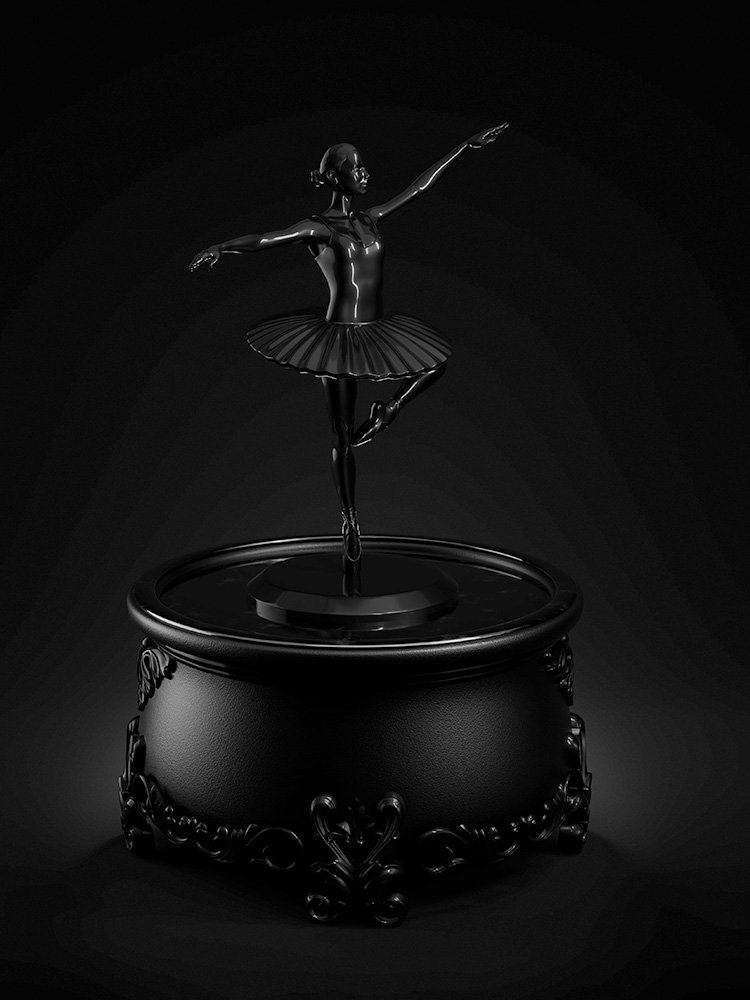Sounds after sunset.
Text: Noëmi Kern
In pre-industrial times, music was played not only in the hours of daylight; in the middle of the night, people even took up their instruments to play. How sleep habits have influenced music.
When we hear the word “Nachtmusik” (“night music”), we immediately think of Mozart, whose “Kleine Nachtmusik” is one of the best-known pieces of classical music. The word “night music” was how the composer translated “serenade” into German. “Strictly speaking, it’s not correct — because serenades were played in the evening rather than at night. Depending on the region, however, the words ‘evening’ and ‘night’ were sometimes used synonymously,” says Hanna Walsdorf, who is conducting an intensive study of music after sunset in an SNSF Advanced Grant project entitled “The Night Side of Music.”
Walsdorf, a professor of musicology at the University of Basel, came up with the idea for the project after stumbling across the work of Roger Ekirch, a historian who proved that prior to the Industrial Age, people slept in two shifts separated by a prolonged waking phase. “This must also have been reflected in musical practices,” says Walsdorf. So far, however, no one had researched this idea.
The Basel-based project investigates the effects that sleep habits have on music, focusing on church music, secular music and music in theater in Europe from 1500 to 1800. Sources improve considerably from the 16th century onward thanks to the printing of books and music, while people’s sleep rhythms were affected by the increasing illumination of streets and public squares from the 18th century onward.
Of course, there are no audio recordings from that era, and sheet music doesn’t contain a great deal of information about musical practices. “We therefore have to think outside the box and consider iconography and texts,” says Walsdorf. For example, illustrations repeatedly show the figure of the “night music fool,” who appears below his love interest’s window with a lute and sings. If the serenade was not to her liking, she would empty her chamber pot onto the street. “This must have been after her first sleep, otherwise the chamber pot would obviously have been empty,” says the researcher.
Other images depict aristocrats playing music at night. Illuminated by candles, torches or chandeliers, these scenes show harpsichords, lutes and double basses. The people in the pictures must have been able to afford light and instruments, and playing music also required something that the lower classes didn’t have – leisure time. Walsdorf talks of a twofold problem of resources — that is, time and money. Some French kings even had a personal lute player at their bedside.
Regulations imposed by the authorities
Less is known about music’s role in the everyday lives of poorer sections of the population. Researchers have found indirect information about their access to music in written records. For example, cities established regulations on singing, bawling and dancing at night — something they clearly felt was a necessary move. There were exceptions to these rules for weddings, carnival and the hospitality trade. Some evidence also survives of “beer fiddlers,” who played in the taverns and sometimes disagreed with the pay they received.
Religious rituals were another practice that was linked to music. “For example, we know people came together at night for private prayers and to sing devotional songs,” says Walsdorf. Priests kept a record of which parishioners owned a hymnbook or bible. The church, however, took a critical view of extravagant parties. Indeed, dancing was associated with folk magic and the devil.
Nocturnal religious practices also took place in monasteries and convents, with one example being Midnight Prayers. “Rather than getting up specially for this — the monks and nuns were awake anyway,” says Walsdorf. In this context, she says, “midnight” is to be taken literally as a period “in the middle of the night”, between the first and second phases of sleep, rather than according to the modern understanding of 12 o’clock precisely.
In religious and secular contexts, musical activities after sunset included evening music before the first sleep and night music after the first sleep. These activities differed both in repertoire and performance practice.
“Particularly in the warmer months, evening music was played outdoors, where it was also possible to use typical, louder outdoor instruments such as kettledrums and trumpets. Night music, on the other hand, was indoor music meant for quieter instruments such as the harpsichord or clavichord and string instruments that were bowed or plucked.” Mozart’s “Serenade No. 13 for strings in G major” is something of an ambivalent case — at least in terms of instrumentation. “Rather than sounding sleep-inducing, it has a stimulating quality,” argues Walsdorf.
Playing with light and dark
If people’s musical practices were geared toward sleep cycles, theater constituted something of a special case. The representation of night as a time period in theatrical productions called for sophisticated lighting techniques, and written sources include deliberations on how to create the illusion of day and night onstage. Performances included the staging of dreams and nightmares, secretive nighttime gatherings, and occult practices such as the witches’ sabbath. “The aim was also to use the level of illumination to distinguish between heaven and hell,” Walsdorf explains.
In terms of the witches’ sabbath, she says we need to ask where people came up with the idea of figures gathering on a mountain at night and dancing to “diabolical music”. Her answer is that there is a grain of truth in it. There were indeed nocturnal dancing sessions — but the diabolical part was clearly a later addition to the tale. “Accordingly, night and darkness should by no means necessarily be equated with sleep — neither back then nor in the present day.”
More articles in this issue of UNI NOVA (November 2024).

